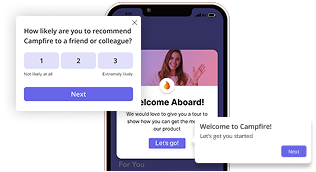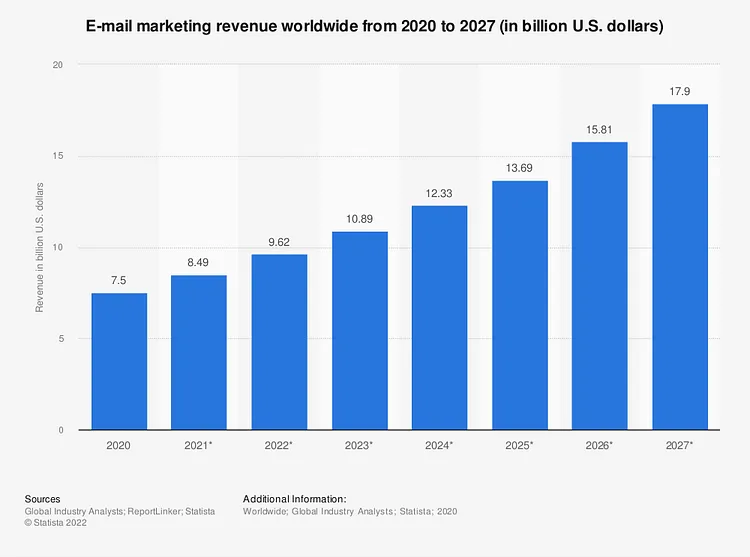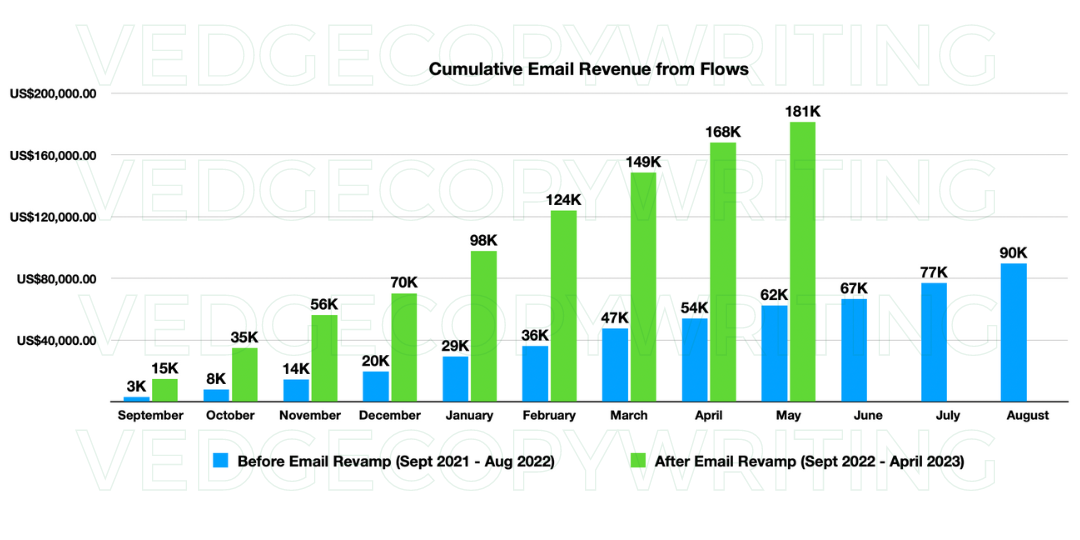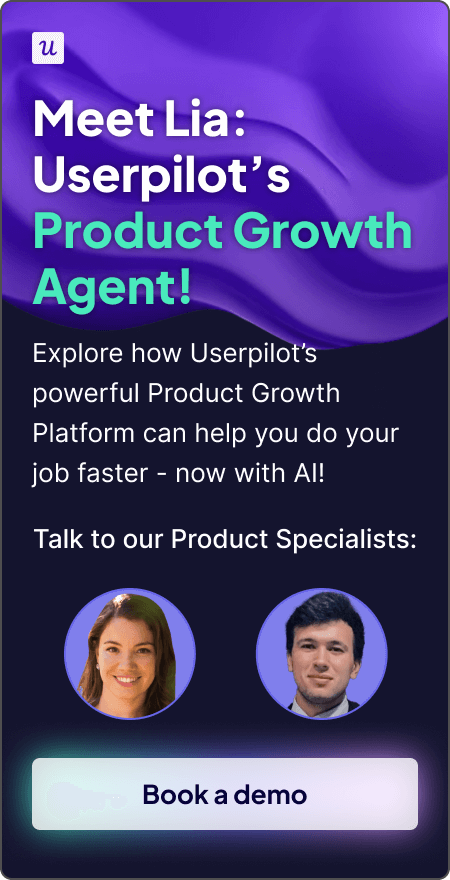The Most Popular Myth About Email Marketing That Seriously Needs to Die
These two case studies prove that supplement brands can still make a lot of money with email marketing.
How many of these e-commerce email marketing myths have you heard?
- “Your subject lines should always be short.”
- “Don’t send so many emails.”
- “Unsubscribes are always a bad sign.”
- “Emails should be heavy on design or they won’t work.”
- “Popups are from the devil and nobody likes them.”
One? Two? All of them?
How many do you believe?
You see, I’ve been in the e-commerce world for almost a decade. In that time, I’ve worked with brands like ReMARKable, helping them achieve their email marketing goals.
In ReMARKable’s case, they wanted to see higher open rates.
Other brands sometimes want an audit. They want to see what’s wrong with their campaigns and what they can fix.
But no matter how many brands I work with — or email conversion audits I run — the biggest, most popular myth that seems to show up over and over is:
“Email is dead.”
Try Userpilot Now
See Why 1,000+ Teams Choose Userpilot

The email novelty effect: Why people today claim that email is dead
Email was an exciting new tool in the 90s. People looked forward to receiving them. And hearing, “You’ve got mail!” was a highlight of any day.
Today, email has lost its novelty. It has become a staple. And it’s had to undergo various changes.
For example, the popularity of smartphones and advances in technology have made email available to anyone, anywhere. It’s no longer a ‘nice-to-have’, it’s a necessity. But these changes have caused a few setbacks, fueling the myth, “Email is dead.”
The most popular email setback is the rise of spam. Email Service Providers (ESPs) battle with spam every day, always finding new ways to filter it out and ban the culprits from sending emails. But they’ve not been completely successful. And the result is clear. People don’t feel safe. They can’t trust email clients and providers anymore. And they keep getting more of them every day.
Another email setback is the quality and relevance of email content. Most brands don’t understand that subscribers are people. The cookie-cutter emails that used to work in the past no longer work. People want a more personal approach. So when they receive emails that aren’t relevant, they stop opening them. And you know what happens when people stop opening your emails?
Your sales take a hit. You try other marketing channels. And you start believing that email is dead. Whether or not you believe email is dead, email marketing still reigns supreme.

In the image above, revenue generated from email marketing is expected to cross the 12 billion dollar mark by the end of the year.
My question to you, then, is:
“What percentage of that revenue will you attribute to your brand?”
Case study #1: How Daniel Budai helped a supplement brand find their “1,000 true fans”
In 2019, Daniel Budai published a case study where:
- He achieved 60% to 80% open rates for a UK-based supplement brand. Note that the industry average is a little over 16%.
- He helped generate over $35,000 in extra revenue in his third month.
How did he achieve these results? And what can you do to get similar results?
A simple 3-step process for getting good email marketing results
Step 1: Clean your email list
I’m a firm believer in trimming your email list and retaining engaged subscribers. Not only is it good for your email health, but you’re able to focus on the quality of your email copy.
Daniel sent out four emails in an attempt to re-engage subscribers who weren’t engaging with the brand:
- Email #1 was scientific-based content.
- Email #2 sold subscribers on the brand’s best-selling products.
- Email #3 was a combination of the first two emails.
- Email #4 was a goodbye email.
After these emails had gone out, he deleted subscribers who hadn’t opened any emails in 6 months. And the list shrunk from over 12,000 subscribers to a little over 4,000.
That was steep. But instead of focusing on the tens of thousands who didn’t care about the brand, they now had 4,000 people who would open their emails, read them, and buy from them. A small, engaged list is always better than a big list that’s just big.
Step 2: Set up more email flows
With a list of 4,050 people, it was time to get to work. Daniel set up the following flows:
- A welcome sequence for new subscribers.
- Thank you, and upsell emails.
- VIP emails offering a lifetime free shipping deal to the best customers.
- Abandoned cart and browse abandonment.
- Win-back emails.
The best thing about supplement brands is the nature of the products. People who buy them can be very loyal because not everyone sells products that work. Supplements also have directions on how many to take and when. So if you track purchase times, you can tell when a subscriber will need the next bottle. With that knowledge, Daniel set up upsell flows that factored in the timing and size of orders.
Step 3: Segment your list and build campaigns for each segment
Segmentation is one of those steps that gets talked about often but rarely gets implemented. You know it works. You just can’t figure out how to approach it.
In Daniel’s case, he received the results of a survey the client had conducted in the past. That was a source of good information. Results from the survey indicated that subscribers fell into two groups:
- 20 to 30-year-olds who want to maintain good health with vitamins and health supplements.
- 60-year-olds who were more interested in joint and bone supplements.
Although these groups seemed to have no similarities, it turned out that both were more concerned about the quality and strength of the supplements, and the price wasn’t an issue.
Armed with that knowledge, Daniel attempted to segment based on age groups, expecting to see impressive results. That didn’t happen. It turns out both age groups were interested in the same content. There’s a lesson here.
Sometimes, the results of a survey don’t match the results of your campaign. Subscribers are humans. So they say one thing but do another. The second attempt at segmentation was based on engagement levels. The idea was to create two segments:
- A set of the highest-engaging subscribers.
- A set of subscribers who aren’t so active.
To decide what emails he was going to send to these segments, Daniel went back to the survey data. After testing different approaches for a few months, it was clear that people loved campaigns that highlighted scientific articles from experts. They loved to read about the scientific benefits of specific supplements. Daniel would then sell them on 1 or 2 products based on the scientific piece in the email.
It worked!
In the end, segmenting the list and identifying the best type of content produced impressive results:
- Open rates ranged from 60% to 80%.
- By the third month, the process earned an extra $36,000.
The most important result was uncovering the most engaged subscribers. And with the work Daniel’s put in motion, I bet he’ll only continue to see more results.
Note: Daniel’s client didn’t have any hope for email marketing in the beginning. You could say he believed email was dead. Well, not anymore.
Case study #2: Carlo Mercado helped double a supplement brand’s email annual revenue in 8 months
Daniel’s results are impressive. But this next case study is an even more fitting response to the “email is dead” myth. In Carlo Mercado’s case study, he doubled his client’s annual email revenue. And he did it in 8 months. Before Carlo started work, the client’s email marketing revenue for the previous 12 months, from September 2021 to August 2022, totaled $198,392. 8 months after working with them, the total email marketing revenue was $403,599.
How did Carlo pull it off?
More importantly, how can you achieve similar results for your supplement brand?
5 Steps to doubling your email marketing revenue
Step 1: Rewrite all emails, incorporating direct response elements
Carlo’s client had a welcome flow that initially looked like this:
- Email #1: Give subscribers the discount code.
- Email #2: Follow up with subscribers who didn’t buy.
- Email #3: Final push with a higher discount to persuade subscribers to buy.
After Carlo’s work, the welcome flow became this:
- Email #1: Give subscribers a discount. Then introduce subscribers to the founder and brand. Tell subscribers about the brand’s mission, vision, and values.
- Emails #2 to #4: Respond to the most common Frequently Asked Questions and address any objections customers face while shopping for supplements.
- Email #5: A final welcome.
The new welcome flow was so successful that, although he hadn’t doubled their revenue yet, Carlo exceeded the 12-month revenue in 4 months. It also generated twice the revenue of the previous flow in 7 months.
What made the difference?
Well, imagine you’re a customer. You’re on the hunt for good supplements. You come across a brand that seems to have what you’re looking for. You don’t know much about the brand. You also have questions about the supplements. So you sign up for their list. Then you receive three emails:
- One gives you a discount.
- A second email reaches out, wondering why you haven’t bought the supplements yet.
- And a third gives you a final warning of sorts.
How would you feel about the brand? That’s what the first welcome flow feels like. But make no mistake. That welcome flow was working for the client to some extent. It’s possible that customers knew enough to make a decision. Perhaps they wanted to try it out first. We’ll never know for sure. But you can tell that the flow doesn’t build a relationship with the subscriber. It just tries to sell.
The new welcome flow is built around the customer. It considers their journey. It embodies the idea that:
- A new subscriber will have questions about the products.
- They will want to understand what makes your brand different.
- New subscribers will have objections that need addressing.
- And they’ll want to find out what your brand stands for.
Carlo’s welcome flow addresses all these things. And that’s why it generated double the revenue of the previous welcome flow.
Step 2: Segmentation. Segmentation. Segmentation.
At this point, you must’ve realized that email marketing success hangs on two main things:
- Your ability to send better email copy that follows the subscriber along their journey.
- Your ability to place subscribers in the right groups.
In Carlo’s case, he confirms that segmenting lists and writing better emails form the basis for his campaigns. For example, he understood that even customers who abandon carts don’t all fall in the same segment.
There are:
- Those who didn’t buy, and this is their first time checking out.
- Those who didn’t buy, but this is not their first time checking out.
- Returning Customers.
When he tweaked the abandoned cart emails to fit each segment, the results were insane! A little over 6 months after the tweak, he had surpassed the previous 12-month revenue from abandoned cart emails. When he followed the same approach for all email flows, ensuring customers received emails that were specific to their segments, sales spiked in the first month. That’s the beauty of email marketing. It rewards you, almost immediately, for your efforts.
Step 3: Focus on building more email flows
Once Carlo had applied the first two steps to every email flow, these were the results:

To give you an idea of the type of flows to build, this is what Carlo did:
- The client didn’t have an existing post-purchase flow for returning customers, so he built one.
- But they had a post-purchase flow for new customers, so he revamped it.
- He incorporated upsells and cross-sells into a new replenishment flow. They didn’t have one.
- He improved their existing review-gathering flow.
- And built a new win-back flow since they didn’t have one.
At this point, he hadn’t built others, like browse abandon, and anniversary flows. But the work he had done had already doubled their yearly revenue within 9 months. There’s a reason why Carlo prioritized building a win-back flow. During the segmentation process, he uncovered that half of all their customers were buying for the first time.
People who bought the first time weren’t coming back a second time. And that’s how you should approach your email marketing. You should always have a “why” for your actions. Don’t just build flows for the sake of it. Focus on actions that directly move the needle in favor of results.
Step 4: Send promotional emails the right way
There are various articles and social media posts that teach that discounts are bad for business. They say discounts will destroy your reputation. They lower the value of your products.
All those articles are correct.
But only because most e-commerce brands offer discounts without much thought or strategy. If all your customers ever receive are emails with discounts on products, why would you expect anything else? Add in the fact that most e-commerce emails are heavily designed, impersonal pieces, and you can see why discounts are bad for business.
In Carlo’s case, he put much thought into when to offer discounts and why. For one thing, he discovered that many people complained about the price of the supplements. And this was despite the monthly promotions.
The client also knows his supplements are on the pricier side. As if to stress the cost, his brand is the supplement of choice for athletes with celebrity status.
To retain the brand’s reputation while addressing the price issue, Carlo offered a discount, but on only two occasions:
- On new product launches.
- On Black Friday and Cyber Monday deals.
Also, only subscribers and online store buyers could access these discounts. Amazon and retail buyers received no discounts.
Step 5: Keep communication going with non-promotional newsletters
Too many e-commerce brands send emails only when they’re trying to make sales. They ignore the fact that email is a communication tool. Once you have your flows set up properly, non-promotional emails intended to maintain communication are essential.
In Carlo’s example, his goal was for the brand to remain top of mind. So he sent emails that weren’t meant to sell subscribers on anything. Despite their non-promotional intention, these emails generated an extra $70,000 within 8 months.
All he did in those emails was include a few links when it made sense. No forcing them. And certainly no discounts. They worked because Carlo understood that customers will always be on the lookout for solutions to their problems. By meeting them on their journey with educational pieces, you become the most easily accessible solution.
Well, there you have it. Email is still a powerful revenue-generating tool for any supplement brand.
Spam and cookie-cutter email copy have lowered effectiveness for many, but the two case studies you read should’ve proven the power of email marketing. And if the two case studies are any indicator, you know to focus on the quality of your list, be strategic about segmentation, and send emails that target those segments.
Email is not dead. Others have proven it. And so can you.



